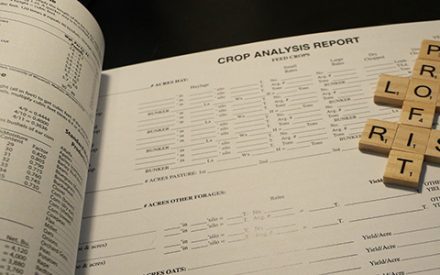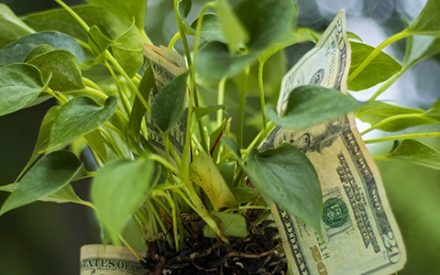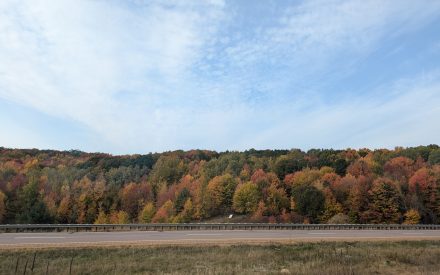Video Summary
Join Steve Vavrus from the Wisconsin State Climatology Office as he provides an update on Wisconsin’s weather and considerations for Wisconsin ag professionals. This report covers three main topics: past weather trends, current conditions, and future outlooks. Highlights include Wisconsin’s record warmth in 2024, mixed temperature patterns in early 2025, and notable precipitation variability. Despite a dry winter, March brought significant rainfall, improving drought conditions. Looking ahead, there’s no clear signal for temperature or precipitation trends, making planning challenging.
Resources
Transcript
0:05
Looks good, Steve.
0:06
Got it.
0:06
OK.
0:06
Well, thanks for that introduction, Jerry.
0:08
So Steve Vavrus, State Climatology Office, This is going to be a rapid-fire operation, so buckle your seatbelts here as I proceed.
0:18
Going to be covering 3 main questions today.
0:21
Where have we been weather wise?
0:23
Where are we currently weather and crop wise and where are we heading?
0:29
So the where we’ve been is the easier part of course.
0:33
And I want to give a a recap of where we were last year and where we’ve been in 2025 so far.
0:39
2024 was remarkable.
0:42
We were the warmest year on record in Wisconsin and we not only were were warm overall, but as you can see from these monthly temperature anomalies, we we’re every single month except July was warmer than normal and we had some exceptional months.
1:05
Indeed, February was the warmest February on record.
1:09
We had the third warmest September and the 7th warmest November.
1:13
Only July was barely below normal.
1:17
So really consistent warmth was the rule in 2024.
1:21
And when we look to see where we are to date, where this is the departures from normal temperature from January 1st until April 8th.
1:34
And it I know it looks like kind of a disastrous Easter egg pattern here, but it’s showing that there’s really a mixed bag in terms of temperatures so far in 2025.
1:45
We see the the warmer colors indicating above normal and those are largely in the South and central.
1:52
The greens and the blues are cooler than normal mostly up north.
1:58
Now when we break it down by the months, January, February, March, we see something kind of interesting and that is that we had a cool winter for a change.
2:08
So January statewide was a degree below normal, February was even more 2.6° below normal, and March was above normal.
2:19
So we had a mixed bag, but normal, typically we wouldn’t make a big deal of these kind of anomalies.
2:25
They’re not huge, but the fact that they were below normal at all is remarkable because we’ve only had two months cooler than normal in 2023 and 2024 combined.
2:36
So when you have two in a row so far this year, it really is a headline grabber.
2:43
Same kind of illustration now for precipitation in 2024 and now it’s not like there’s one sign that dominates.
2:51
It wasn’t, you know, wet or dry.
2:53
It was both wet and dry in 2024.
2:56
And it just kept flipping back and forth, really dry February, then six straight wet months.
3:04
We had the wettest March through August on record and then suddenly we had that late summer dry spell into the fall, 6th driest September, October on record and then we flipped right around and had the 11th wettest November.
3:18
So more of this flip flopping of precipitation high variability, just like we saw in 2023 and again thus far in 2025.
3:29
Here is the normal or here’s the precipitation anomalies so far in 2025.
3:35
And similar to the 20 or to the temperature anomaly pattern, there’s not really a clear-cut way to define it.
3:42
It’s, really depends where you are.
3:45
In the north and east, it’s been wetter than normal in the year to date.
3:50
Farther southwest, it’s been drier than normal.
3:54
And once more, if we break it down by month, we look back at January.
3:59
It was extremely dry in January in Wisconsin, the third driest on record.
4:06
Got a little wetter in February, but still well below normal.
4:09
And then we’ve had such a wet March, the 5th wettest on record, about double the normal precipitation statewide.
4:17
So you add it all up and you get this kind of mish-mash pattern of various temperature anomalies or a precipitation anomaly rather.
4:27
We’re aware that it was dry in the winter, not only for overall precipitation, but specifically snowfall.
4:35
This was a problem for in a lot of different ways, certainly in the tourism industry, but in agriculture, it meant we had deeper frost depths than usual.
4:44
We look at the accumulated snowfall starting from last summer into this this current week.
4:51
This is how it looks.
4:52
The greener the color, the more the snow that fell and we didn’t have a whole lot in in the upper Midwest, more to the north as usual, some lake enhancement around the UP and northern Wisconsin, but really everywhere north of about central Illinois had a snow deficit.
5:12
The yellow colors, lighter yellow colors indicate up to a 20-inch deficit of snowfall for the season and the gold colors even more so, 20-to-40-inch deficits.
5:23
Essentially everywhere in Wisconsin had a snowfall deficit, maybe even a drought this year, this past winter.
5:33
So snow, drought, dry winter, wet March, how does it all add up?
5:39
Well, the US Drought Monitor just came out this morning with a brand new map they see for conditions through Tuesday of this week.
5:48
And what we see is a pretty good situation overall.
5:52
This is areas in white indicate that there’s no drought whatsoever.
5:58
Yellow areas indicate abnormally dry but not drought category.
6:03
And we only see a couple areas in the far north and in the far southwest that are moderate drought.
6:10
So that is really good news compared with where we’ve been.
6:14
And just as a reminder of where we’ve been and how much better we are today, I’m showing on the right the drought monitor from the end of last October after the drought had peaked over the course of the late summer and early fall.
6:31
And it was actually the first time in the drought monitors history since 2000 that all of Wisconsin was in some sort of drought category.
6:41
And the lighter colors are moderate drought much of the state and other areas were even in severe drought.
6:49
So not at all where we wanted to be.
6:51
But when we fast forward it to this week, we see this huge improvement hollowed out in the middle of the state, no more drought at all.
7:01
And really just these two residual pockets left the remnants of the severe drought from last fall.
7:10
And a big reason for that improvement is when we look at the precipitation anomalies over the past 12 months, the greens and blues indicate a surplus compared to normal.
7:23
And that has been the case throughout the interior of Wisconsin.
7:27
And the more interior you get, the bigger the surplus.
7:31
So these areas in light blue and darker blues and purples indicate surpluses of over 6 inches accumulated over the past six months.
7:40
And that really helps not only in the surface layer, but also getting down into the subsurface.
7:48
And we can think about or look back to where we have been drought wise and where we are today by this metric called the Drought Severity Coverage Index or DSCI.
8:00
And it’s a useful way to characterize drought because it combines both the severity as well as the spatial extent and puts it into a single number.
8:09
And the way it works is we take the drought monitor categories of intensity from none abnormally dry all the way to exceptional drought.
8:18
We give it a numerical score from zero to five and then just take the area weighted average.
8:24
And right now we’re at a a pretty good score, only .59, which indicates that the statewide average is somewhere between no drought at all and only abnormally dry.
8:37
We can look back to where we’ve been and you know, get some historical reference to where we are today going all the way back to beginning of 2023 and then ending up where we are today.
8:50
So the lower the score, the wetter it is.
8:53
And we began 2023 extremely wet and then had that major drought that summer skyrocketed way up and then improved in the fall. Little bit of a dryness in February, March last year until those big spring and summer rains came.
9:09
No drought at all concerns in the summer.
9:12
And then that late summer drought emerged, peaked in October, improved in November, and then you see the continued almost linear improvement over the last few weeks.
9:23
Our Assistant state Climatologist, Bridget Mason put this graphic together.
9:28
And then I just tacked on the current value as of this morning in the red.
9:32
So more good news in terms of moisture and we can actually take those drought descriptions and look in more detail at specifically the soil moisture as represented by this week’s NASS report, The first one of the season it just came out.
9:55
One of the nice things they do is provide these regional assessments of soil moisture, first for topsoil.
10:03
I’ve taken that data and mapped it.
10:05
This is showing the percent short or very short of topsoil moisture.
10:10
So the lower the number the better.
10:12
And we see for most of Wisconsin really low numbers, 5% or less in most of the state.
10:20
So you get farther south and east though you do see some double-digit numbers.
10:24
So those are a bit of a concern, especially high in south central Wisconsin, but overall looking really good for the most part.
10:33
When we turn to a deeper level in the subsoil, things get a bit higher.
10:38
These numbers grow almost everywhere.
10:41
So typically a lot of double digit numbers, but still no more than 10% over the central and north and western parts of the state.
10:51
But farther South and farther east, and in particular here in the southwest, we see numbers exceeding 20% and that that 49% in the southwest kind of surprised me.
11:04
So keep that in mind that in some areas the subsoil has still remained pretty dry.
11:11
And a good explanation for the southwest being so extreme is that if we look back at precipitation anomalies the past two years now all the way back to April of 23, we see really big precipitation deficits in excess of eight inches or more.
11:32
You see the red in excess of a foot.
11:35
And so that is still working its way through the system and that explains why the southwest is still got a lot of dry subsoil moisture.
11:46
All right.
11:46
So as I was saying, that would be interesting to compare the current situation with the last few years looking at topsoil conditions and we see is the current conditions are really similar comparable to the last few years, whether we look at the surplus in the dark blue, the adequate area in the middle blue or the deficit.
12:08
So, you know, things are kind of in the middle compared with what we’re used to.
12:14
And now, Jerry, you mentioned this AG Climate Outlook series, which has recently been renamed, at least for now, the Wisconsin AG Weather Outlook.
12:24
So you Badger Crop Connect groupies remember this from last year.
12:28
And Josh Bendorf from the Midwest Climate Hub led the effort.
12:32
And he’s continued now as our brand new climate outreach specialist in the state climatology office.
12:39
And so we’re really pleased he’ll be able to continue this series again.
12:44
So I’m going to be showing some slides from that.
12:47
This is, first of all, the precipitation over the past seven days in Wisconsin.
12:53
It’s looking pretty good.
12:55
The green areas represent anywhere from half an inch up to an inch.
12:59
The bluer area is somewhat less.
13:01
So much of the state has got an adequate rainfall the last seven days, especially if you’re in the south and eastern parts of Wisconsin.
13:11
Even better for if you like precipitation over the past 30 days, we see these these redder and orange colors and those indicate substantial precipitation orange and red, especially in the northeast part and the southeast parts of Wisconsin.
13:29
The drawback is in the northeast as some of you know a lot of this was ice and we don’t like to see that, but it did accumulate and virtually everywhere in the state has substantial precipitation in the last 30 days contributing to that 5th wettest March on record.
13:48
Now where are we in the looking ahead at the next week and longer in terms of precipitation, The forecast is showing most of the state not having a whole lot of precipitation over the next seven days.
14:02
This lime green color represents 1/10 of an inch or less, up to 1/4 of an inch, 1/2 an inch.
14:08
And it’s really only in far northern Wisconsin where it looks like we’re going to see substantial amounts or excessive amounts even of precipitation.
14:18
But the location of that is pretty favorable because that is one of the pockets where moderate drought remains.
14:26
Speaking of far north, it’s still frozen up there in many places.
14:31
This is the current frost depth that was just put together this week by the NOAA maps.
14:36
And although if you’re in the south and west and east you, aren’t really thinking about frost depth anymore, if you’re in northern Wisconsin, you still are.
14:44
And some of these are pretty substantial and they need to work their way through as we get more April warmth into May.
14:54
And consistent with that, we can look at the current soil conditions or soil temperatures from the WISCO net network.
15:00
And we see at 4 inches, 8 inches and 20 inches, the soil temperatures represented from the increasingly prevalent number of stations around the state.
15:12
Far north you see a lot of low 30s consistent with that deep frost depth.
15:16
As you go farther south less of a concern, upper 30s, low 40’s the norm.
15:21
But keep in mind that nowhere is approaching 50° yet.
15:25
So we’re we’re still far away from that magic 50° number optimal for planting. And looking farther ahead at the week to two week and seasonal outlooks, we’re not seeing a whole lot of signal.
15:40
And what I mean by that is we like to get a sense that it’s going to likely to be warm or cool or wet or dry.
15:47
But instead, we’re really not seeing much of that in Wisconsin.
15:51
These are expressed as probabilities.
15:53
So they’re the redder the colors, the more likely it is to be warmer than normal or blue colder than normal and you see the west warm east cool.
16:04
But here in Wisconsin, we’re sandwiched in the near normal category.
16:07
So there’s not a whole lot to go on for temperature probabilities. And that’s for the week or two in advance.
16:15
When you look for the whole spring season, April through June, we see a similar story, mostly equal chances in terms of temperature and then a slight lean above toward warmer the normal conditions in the light orange, but not a whole lot to go on for planning purposes.
16:33
And then for precipitation, it’s showing a, lean toward a wetter than average conditions for the week to two-week outlook.
16:43
But that’s that’s also a pretty low category instead of one and three, it’s between a 33% and 40%.
16:51
So not a whole lot to go on there.
16:55
And then same old story for the spring as a whole, April through June, the seasonal precipitation outlook for most of Wisconsin is showing equal chances.
17:05
Farther east in more that interior, the Great Lakes area a stronger signal toward wet.
17:11
But for the most part, not a whole lot to go on.
17:15
So conclusions framed as the questions I posed at the beginning.
17:20
First of all, where have we been and where we’ve been is really warm, especially last year which had lots of precipitation variability.
17:30
It’s also this year has been notably cold and dry, January and February.
17:36
But of course we’ve had a wet and warm March to help make up for that.
17:40
And we had a pronounced statewide drought last fall.
17:44
So that’s where we’ve been.
17:45
And where we are now is really only modest drought conditions, and that’s only if you’re in the far north and the far southwest.
17:54
We see soil moisture deficits most pronounced at depth rather than at the surface and especially in the South and east and notably the southwest.
18:03
And we still have frozen soils in the north.
18:06
And statewide, the surface is not approaching 50° yet.
18:11
Where we are heading.
18:13
We don’t really have a good handle on that to be honest.
18:17
We’ve had a cool start to April and we are in the cusp of the usual spring warm up.
18:22
But as I said, there’s no clear temperature or precipitation signal, whether that’s for the week or two ahead or for the season ahead, April through June.
18:31
So we’d like to see some sort of signal to plan for, but it appears that is really lacking at the moment.
18:37
But stay tuned, that can change in the coming weeks.
18:40
So I will end it here and stop sharing and be happy to take any questions while we’re in the transition.
Badger Crop Connect
Timely Crop Updates for Wisconsin
Second and fourth Thursdays 12:30 – 1:30 p.m.
Live via Zoom

 ▶ Fall 2025 Financial Assistance for Producers
▶ Fall 2025 Financial Assistance for Producers ▶ Fall 2025 Ag Policy Update
▶ Fall 2025 Ag Policy Update ▶ Fall 2025 Corn and Soybean Market Outlook
▶ Fall 2025 Corn and Soybean Market Outlook ▶ November 6 Ag Weather Outlook for Wisconsin
▶ November 6 Ag Weather Outlook for Wisconsin


